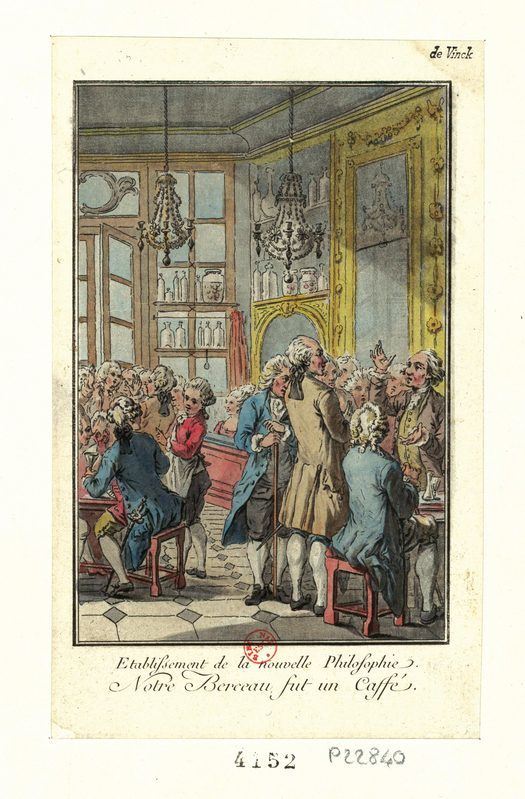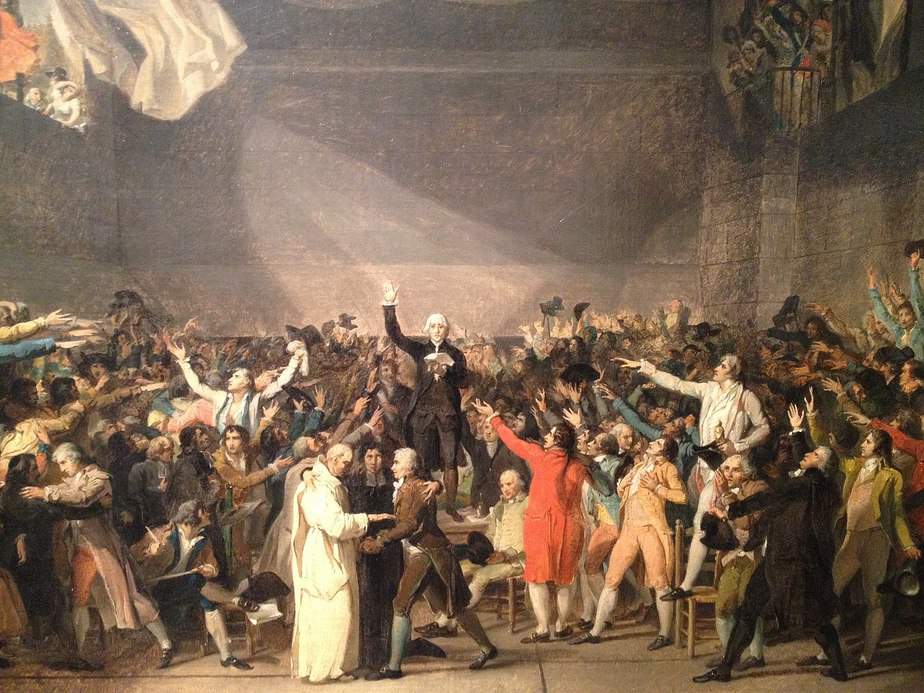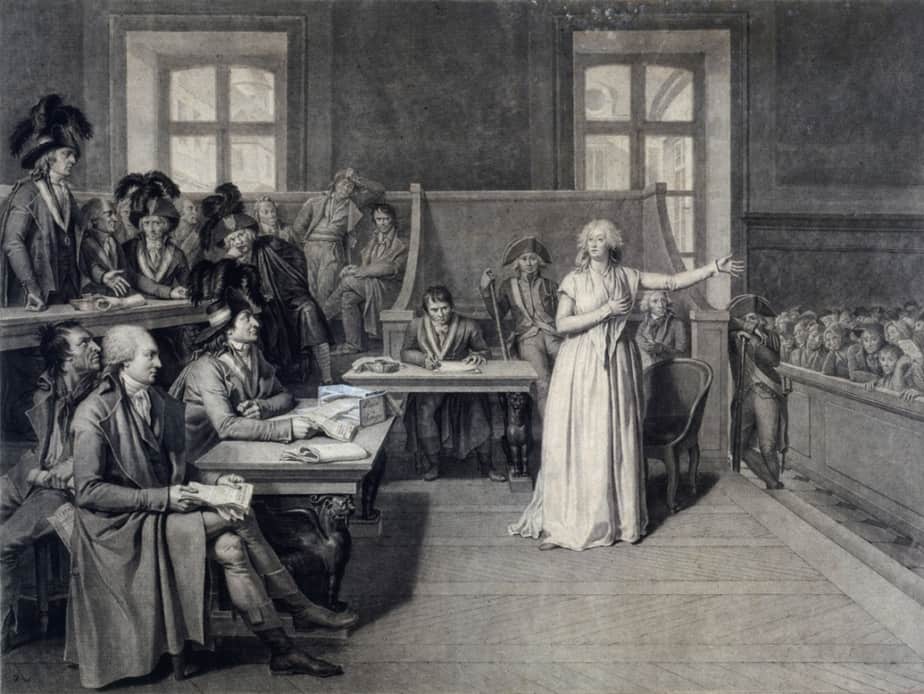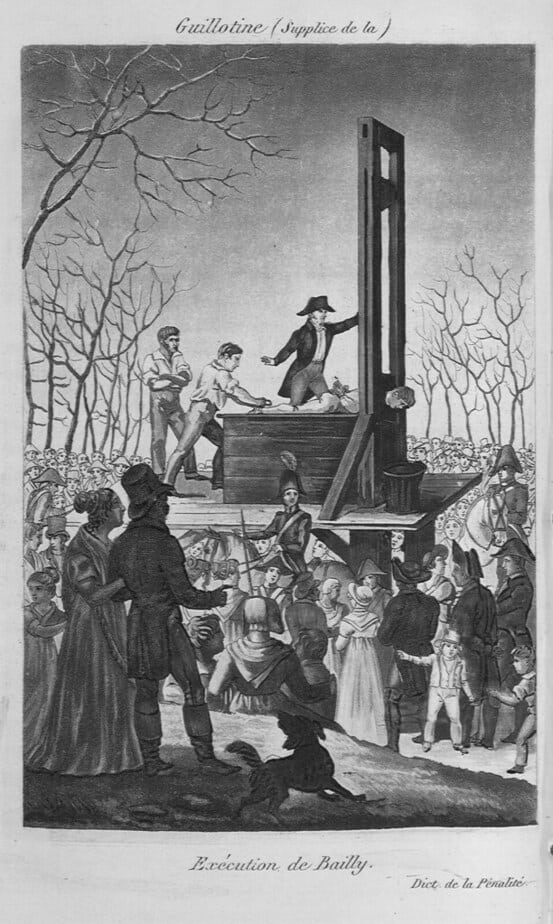The Tragedy of Jean-Sylvain Bailly: Mayor of Paris
In summer 1789, in the eve of the Revolution, the Parisians took their destiny into their hands. Jean-Sylvain Bailly is the man they chose to lead them in a time of trouble. Replacing the men appointed by the kings, this intellectual is trusted to affirm the power and the will of the Parisians.
He is respected and praised by all in the beginning. Yet two years later, his popularity has plummeted and he has to resign. Two more years and he is hunted and sent to the guillotine. Despite this, during all this time in office he never failed to his duty and did not change his ideas.
Let me tell you the story of the first mayor of Paris. Through his tragic destiny, you will plunge in one of the most troubled times in History.
Bailly, a distinguished astronomer
Born in 1736, Jean-Sylvain Bailly’s first vocation is scientific. Renown astronomer, he wrote an acclaimed History of Astronomy. He was even commissioned to build an observatory on top of the Palace of Le Louvre.
He became a member of the Academy of Sciences: an institution created by the kings for the collaboration, emulation and control of the scientists. One of the biggest craters on the moon is still today wearing his name. Thanks to the quality of his writings, he is also considered to be a literary figure.
This career leads him to be an icon of the Enlightenment. This cultural movement of the eighteenth century encompasses scientists, literary figures and philosophers around the idea of progress and rationality. Voltaire, Rousseau, Adam Smith, Hume are all part of the same intellectual community, shaking the basis of the traditional society. The educated part of the western population turns their eyes to these intellectuals, searching for social and political guides.

Philosophers debating in a Parisian café. Sourced from Le Livre Scolaire
In 1789, the king Louis XVI organized an election of the General Estates. This assembly, composed of elected deputies of the nobility, the clergy and the commoners, is to solve the financial problems of the monarchy. Bailly, at the imitation of Benjamin Franklin in the USA, wanted to invest his scientific prestige in his political ambitions.
He asks the king to double the number of deputies of the commoners and obtains it. He then proceeds to help the Parisians to write a list of grievances that is transmitted to Louis XVI.
Parisians elected Bailly among their deputies for this success and his intellectual prestige. Louis XVI, learning his election, declared that he is pleased because Bailly is a honest man. The fifth of May 1789, Bailly attended the opening ceremony in Versailles.
Bailly is among the deputies who ask to change the protocol. When speaking to the king, he didn’t want to kneel while the king remain seated. His rule humiliated the people of France.
Open to some changes, and overall a simple man, Louis XVI finally agreed to let the deputies stand in front of him.
Bailly, a leader of the Revolution
Soon the disagreements arose among the deputies and between the deputies and the king. Some deputies wanted the Assembly of the General Estates to become a Parliament.
On the 20th of June, the deputies found the gates of the meeting room closed by order of the king. The deputies of the commoners, outraged, decided to look for another room in the city of Versailles.
The deputy named Guillotin – who later presented the guillotine – picked a room used to play Jeu de Paume, an ancestor of Tennis. The deputies swore to stay together until they could give France a constitution.
This was a bold move, affirming that the national sovereignty was owned by the national assembly and not exclusively by the king. Bailly, dean of the deputies of the commoners, was chosen to stand on the table in the middle of the room to read aloud the oath. The scene was immortalized by the famous painter David.
Over the following days, Louis XVI tried to reclaim his power, and sent an officer to evacuate the meeting room. Bailly replied firmly, “I think that the national assembly cannot receive orders”. His colleague Mirabeau adds that the deputies will not leave unless forced by the bayonets.
The officer retreats and Louis XVI decides to give up, defeated. The absolute monarchy, the regime where the king has full power, is over. For ten days, Bailly becomes president of the National Assembly in charge of writing the new constitution.
Bailly, mayor of Paris
In July 1789, the tension is high in Paris. Even if these events happened in Versailles, the political agitation that inspired them took place in Paris.
The city is only 16km (9 miles) away from Versailles. The revolutionaries were afraid of being repressed, and also of the fast-approaching famine. This tension lead to many uprisings in Paris, and a complete state of anarchy.
On the 14th of July, an uprising lead to the storming of the Bastille fortress – the state prison and symbol of the absolute monarchy.
An outburst of violence follows the fall of the fortress. Flesselles, the Prevost of the Merchants, roughly equivalent to a mayor of Paris, is accused of being a political opponent by the crowd. He is shot and his head is put on a pike. The rioters walk in the streets of Paris with his head and the head of the governor of La Bastille.
The Parisians take the opportunity of the anarchy following this event to create a new municipal authority. This is where Bailly comes in, as he is respected by all for his role in the beginning of the Revolution and for his intellectual prestige.
He is elected mayor of the Paris commune by the Parisian electors. The main issue for him is to find the wheat to appease the hunger of the poor and avoid the coming famine.
On the 17th of July, three days after the storming of La Bastille, he receives a visit from the King in the city hall of Paris. Louis XVI, who no longer trusted his own army, abandoned the idea of a repression of Paris. He decided to acknowledge the new municipal power.
Bailly gave him the cocarde, a roundel – the new symbol of the revolution. The colours are the ones that today make up the French flag – blue and red, the colours of Paris, and white, the colour of the king.

The cocarde. Sourced from Lemonde.fr
Even though he accepted the position of mayor, Bailly was shocked by the atrocities committed by the rioters.
He was unable to prevent the massacre of his son-in-law Bertier in another uprising the same month. The new mayor of Paris had no idea how he was going to control the Parisian crowd…
Bailly was a moderate revolutionary. He wanted a constitutional monarchy, and a limitation upon the power of the king. He did not want to get rid of the King and disapproved of a radical democracy.
For this, he eventually is hated by the monarchists and the radical republicans. The radicalization of the Revolution puts him in a very precarious position.
Bailly, his resignation
From October 1789, Louis XVI and Marie-Antoinette lived in Paris, in the Tuileries Palace. At the mercy of any riot, they took refuge in their “golden cage”.
On the 20th and 21th of June 1791, the royal family tried to escape secretly from Paris. After some mistakes, their carriage is caught near the French borders and brought back.
Accused of high treason, the king lost what is left of his popularity. However, the moderates who dominated the National Assembly wanted to keep him to avoid radical changes.
Some republicans met on the Champs de Mars, the grass upon which stands today the Eiffel Tower. They asked for the replacement of the monarchy and invited the Parisians to come to sign a petition on the 17th of July.
Bailly, in agreement with the National Assembly, forbids the gathering. He proclaimed the martial law and sent the national guards to the Champs de Mars, all commanded by the general La Fayette. The general opens fire, resulting in the death of around 50 people.
Bailly then had the blood of Parisians on his hands, as he was the one to give the orders. He realizes that the Parisians will never forgive him and that his political career was finished. He resigns and he is replaced in November 1791 by Pétion. Bailly then tries to leave Paris, considering it safer elsewhere.
Bailly, arrested and sentenced to death
Bailly was advised by his friends to settle in London. A safe choice where he would not be reachable by the revengeful radicals. However, instead he moves to Nantes, in western France.
In 1793 the radicals were in power in Paris, the same people who had gathered on the Champs-de-Mars two years before.
To make things worse for Bailly, a civil war broke out in the region of Nantes between the opponents and the defenders of the Revolution.
In September 1793 Bailly tried to take refuge in the house of another distinguished scientist, Laplace. As soon as he arrived at his place in Melun, south of Paris, he is arrested and transferred to the city, sent to trial, and put in prison!
In the meantime, he was also asked to participate as a witness in the trial of the former queen Marie-Antoinette. By this time, Louis XVI had already been guillotined.
Marie-Antoinette was used as a scapegoat by the radicals in power because of her impopularity. The radicals believed that her expenses caused the deficit of the State and wanted to blame her for all the bad decisions taken by the king.
Bailly was wrongly accused of having facilitated the earlier escape of the royal family. When put in front of Marie-Antoinette, Bailly bows to her and spoke respectfully. He refused to accuse her and simply tell what the prosecutor Fouquier-Tinville wants, thus Bailly was brought back to prison.
Bailly had abandoned his last hope to be saved.
Although, his quietness and assurance made a strong impression on the public of the trial, making it a difficult decision for the prosecution to behead the Queen. During his own trial however, he was accused by the same prosecution of being “sold to the tyran”, Louis XVI, and was sentenced to death.
Because he was responsible for the massacre of the Champs de Mars, the court decides to execute him on this same spot. Bailly was forced to wait for two hours on the grass so that the executioner can intall the guillotine.
The execution is public and many Parisians come to insult him. In the cold of November, wearing only a shirt, Bailly shivers. The executioner asked him: “Are you shaking, Bailly ?” He replied, “Yes, but only because of the cold !”
The first mayor of Paris died miserably. Remaining loyal to his original ideas had gotten him killed. On the side of the progressists in 1789, he had become a conservative in the eyes of the people in power in 1793.
Despite having the opportunity to compromise to save his life, he threw his chance away. As he did not have an organized political party supporting him, his memory was not honoured after the Revolution.
He was buried under the church of Saint-Pierre-du-Gros-Caillou not far from where he died.
His presence in the city is today discreet. A small statue at the left of the façade of the City Hall reminds us of his contribution to Paris. A commemorative plaque can also be seen in the 2 Avenue de la Bourdonnais where the execution took place.

Statue of Bailly in the Hotel-de-Ville, sourced from Wikipedia
Planning a trip to Paris ? Get ready !
These are Amazon’s best-selling travel products that you may need for coming to Paris.
Bookstore
- The best travel book : Rick Steves – Paris 2023 – Learn more here
- Fodor’s Paris 2024 – Learn more here
Travel Gear
- Venture Pal Lightweight Backpack – Learn more here
- Samsonite Winfield 2 28″ Luggage – Learn more here
- Swig Savvy’s Stainless Steel Insulated Water Bottle – Learn more here
Check Amazon’s best-seller list for the most popular travel accessories. We sometimes read this list just to find out what new travel products people are buying.



















